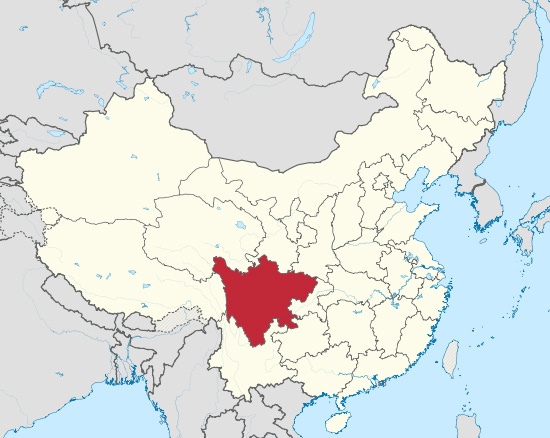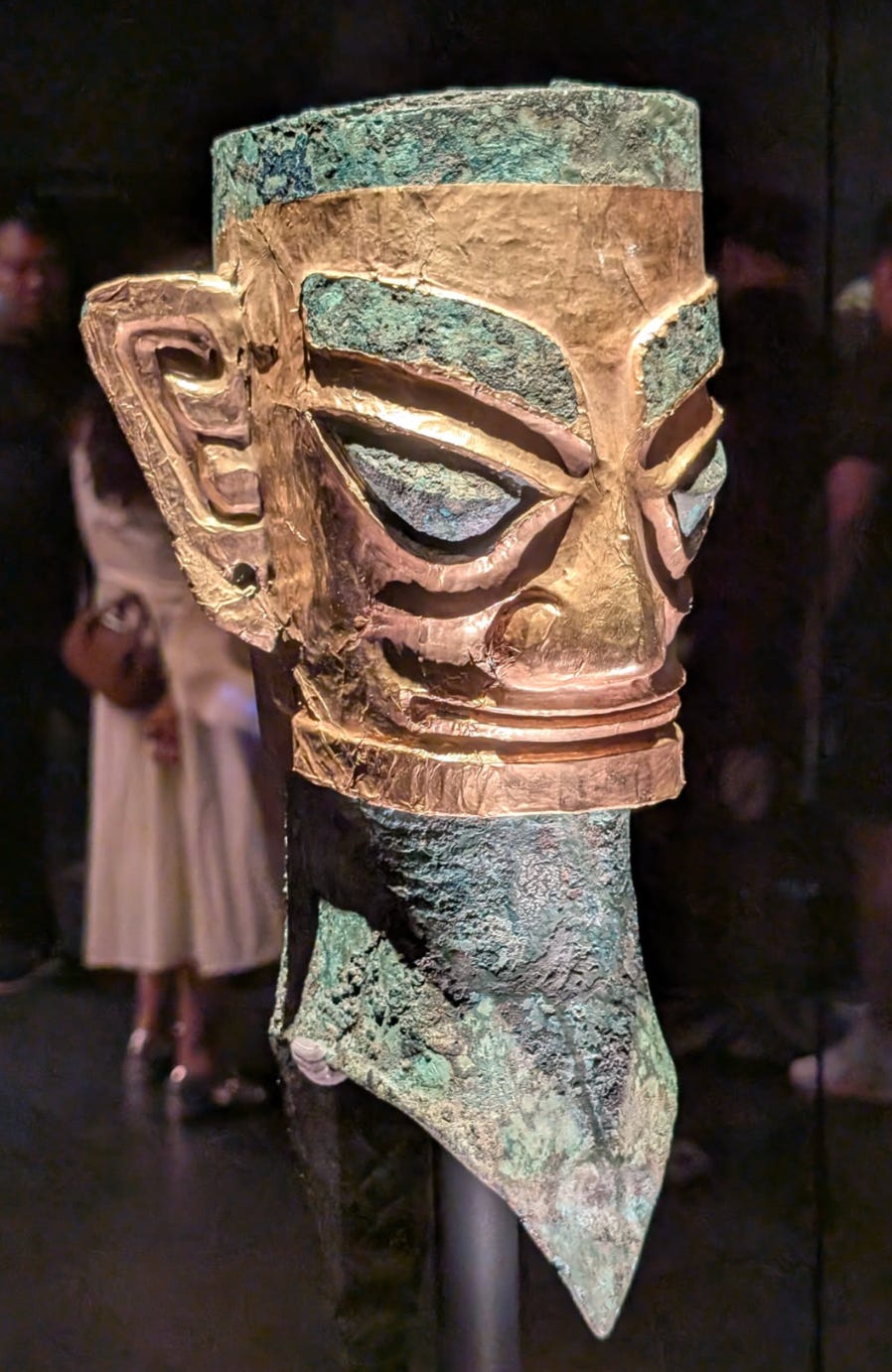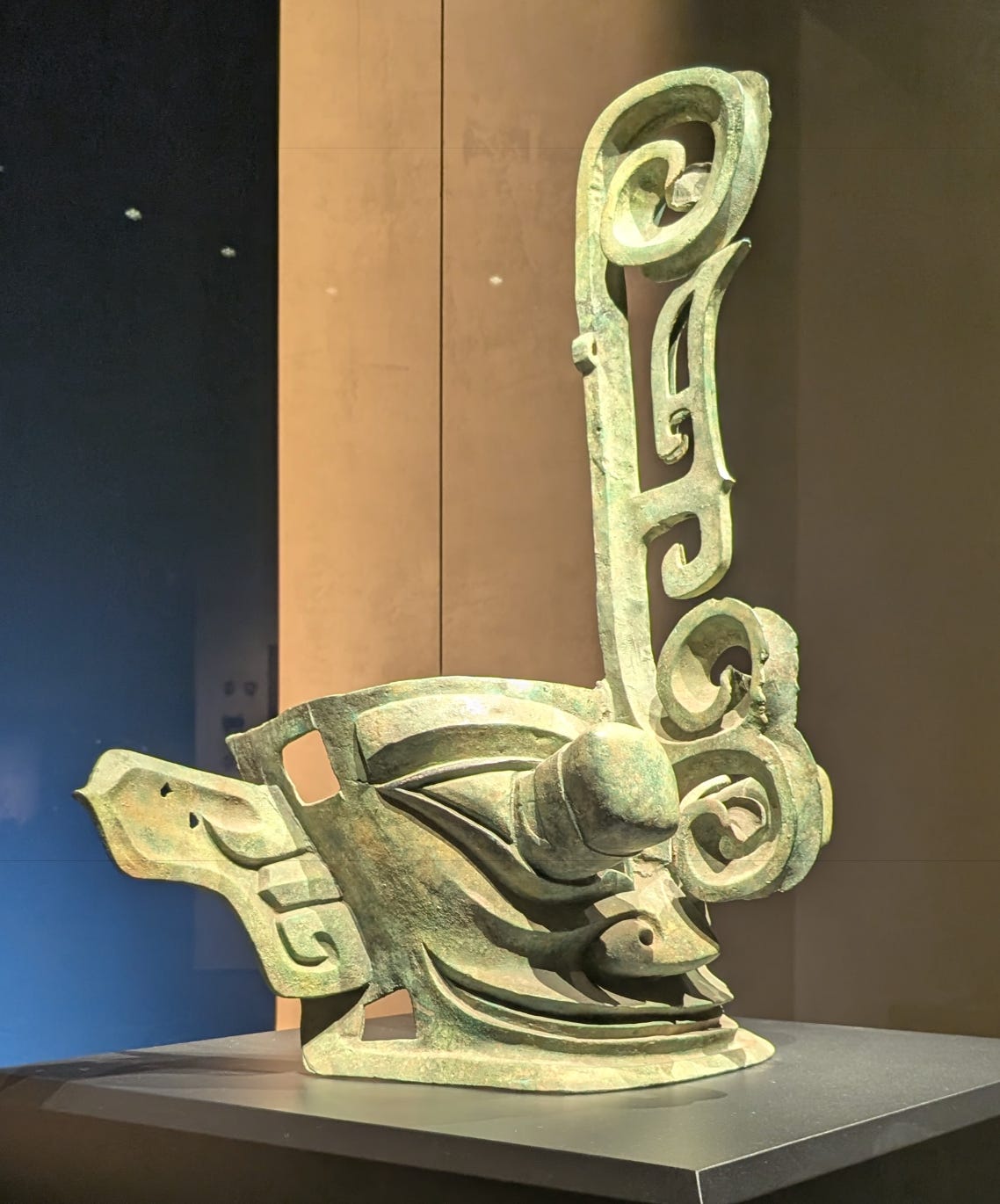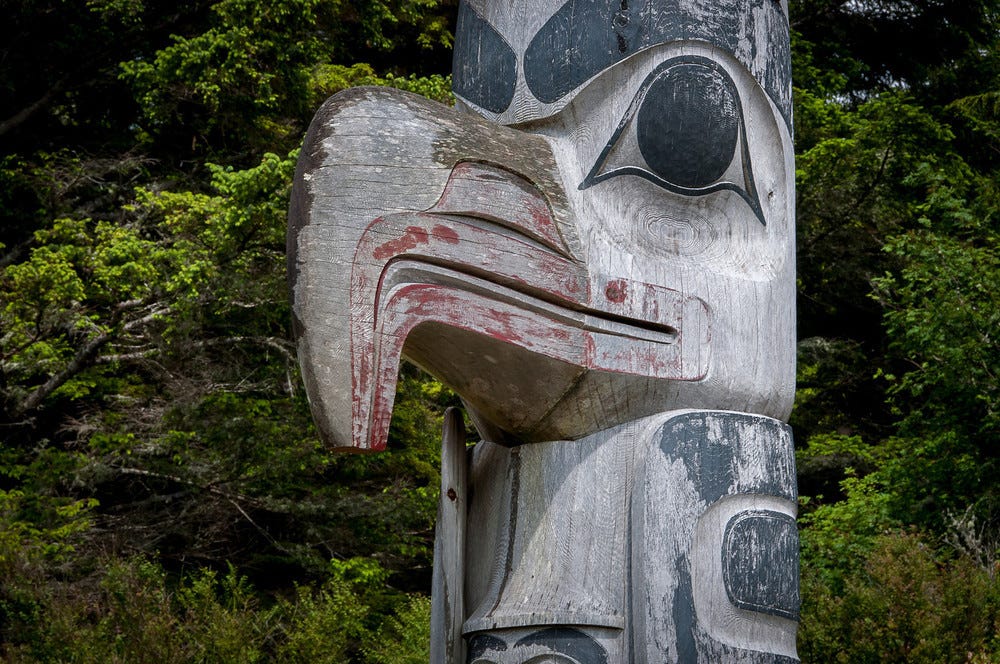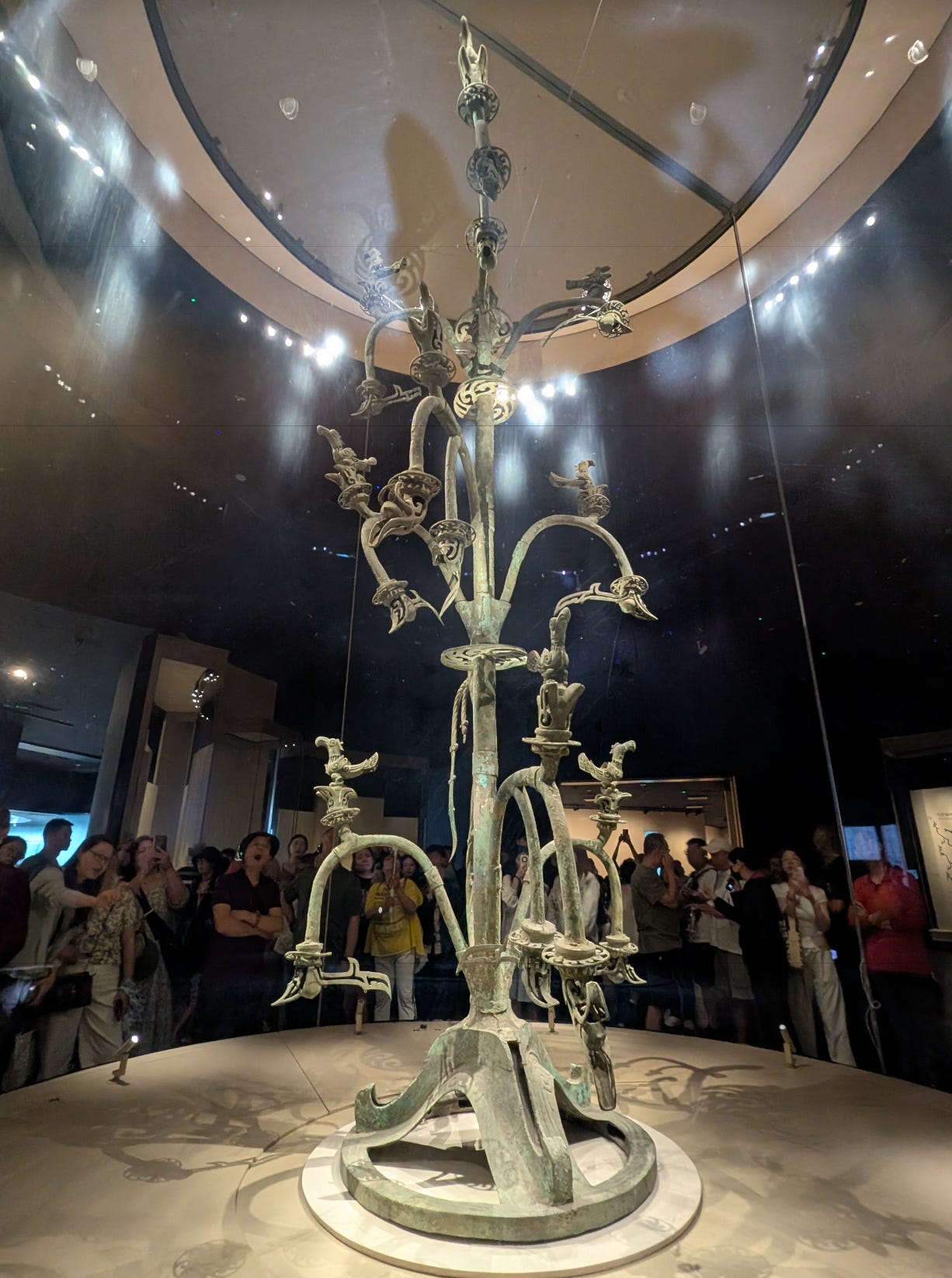Unearthing the lost civilization of Sanxingdui
Alien masks, golden sceptres, and many questions to be answered
I rarely feel awestruck, but it happened on my recent trip to China.
The new Sanxingdui Museum is located an hour’s drive from Chengdu, Sichuan. Within it are the latest artifacts of a strange ancient Chinese civilization unlike anything I’ve seen before.
Sanxingdui (the name of both a city and civilization) existed a whopping 3700 years ago. To put that into perspective, Pharaoh Tutankhamun ruled Ancient Egypt 3340 years ago. Canada as a country formed 157 years ago.
Despite lasting 1600 years, there is no written record of Sanxingdui. Only artifacts remain to give us clues. Several new pits were discovered in 2019, and what’s been unearthed so far is challenging our understanding of Chinese history. Theories are actively being debated right now. What an exciting time!
We were lucky to have Harry as our enthusiastic English tour guide. His father was part of the archaeology team and he grew up around the sites. He kindly offered to Wechat our questions directly to the leading experts if he couldn’t answer them.
I furiously jotted down everything Harry shared - all of it fascinating. Here are highlights:
Who were the people of Sanxingdui? China consists of many different ethnic groups (56 of them exist today). The people of Sanxingdui were likely one ethnic group during the Bronze Age. They were well-protected by the mountains of the Sichuan Basin, which I imagine allowed them to develop such a distinct culture.
Where did the people of Sanxingdui come from? One strange finding is that Sanxingdui rulers carried golden sceptres. No emperors in China had this tradition, but Egyptian Pharoahs did. This leads some experts to theorize that the people may have come from Africa or the Middle East. Other experts think this is nonsense.
What is the significance of their masks? Sanxingdui people were deeply religious and performed many rituals. Masks were used as a way to connect with the gods. These were probably made in the likeness of tribal leaders. Small masks were attached to wooden bodies, while large ones were placed atop totems.
Why do the masks look so alien-like? Some experts believe that Sanxingdui people suffered from iron deficiency due to being landlocked, which causes bulging eyes. Others believe they may be inspired by the eyes of the silkworm, the symbol of a legendary king.
Having seen photos of silkworms, I’m not entirely convinced. My completely amateur guess is that the eyes portray a spiritual medium having visions or hallucinations. What do you think?
What caused the civilization to disappear? This was likely due to a change in regime. It was common for all evidence of former culture to be destroyed by the new (Mao’s Cultural Revolution comes to mind). Many of the artifacts were found in large pits, looking like they were intentionally disposed of.
The Sanxingdui people developed sophisticated techniques to make both large and intricately detailed sculptures out of bronze and jade. The symbolism and style of these pieces are incredibly unique, giving us insight into their cosmology and everyday life.
Many of these pieces are adorable and cartoon-like. One looks exactly like the pig from Angry Birds and is an actual piggy bank! Another features a stout muscular man with hair standing upright.

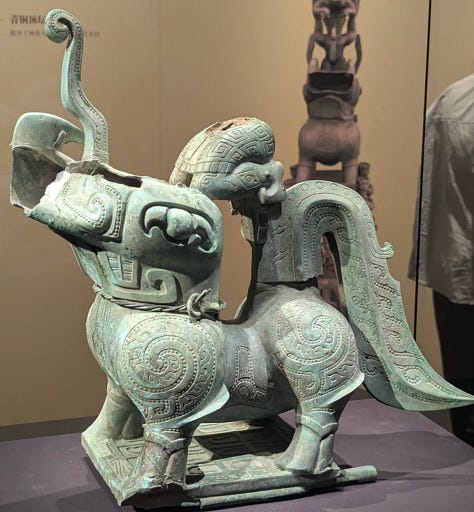
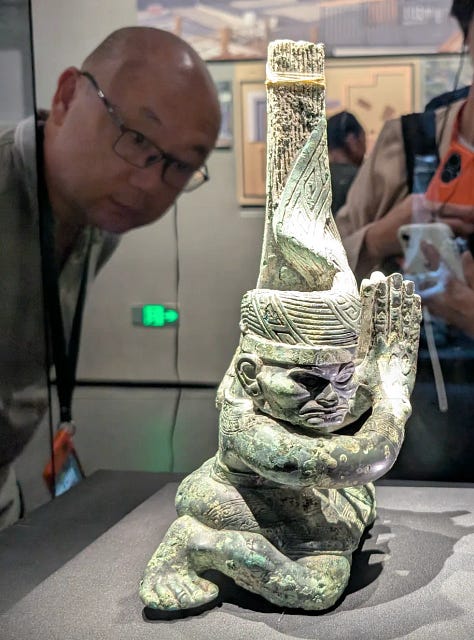


As an appreciator of Canadian indigenous art, I was struck by the similarities between Sanxingdui and Haida Gwaii symbols. Perhaps it’s coincidental, but I do wonder if there’s something that connects these two cultures.
The finale of the exhibit was this jaw-dropping 4 m tall bronze statue of a sacred tree. Experts believe it depicts the legend of the ten mythical sunbirds - a story that did survive the sands of time.
Love Sanxingdui? Take it home with you!
I was surprised by how intensely this museum was branded. Even the museum cafe and post office had their own design systems, mascots, and product lines. The level of creativity and quality was impressive.
It was hard not to walk away with everything in sight. I settled for a mythical bird stuffie that I named Harry (after our tour guide of course).

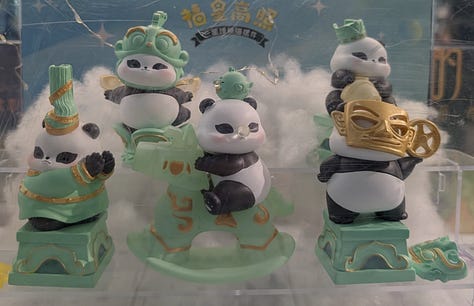



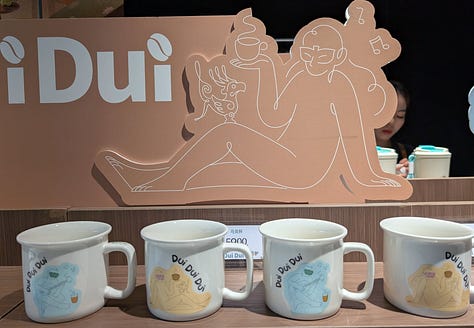



Final reflections
I still feel a sense of wonder as I look back on these photos. It’s sobering to know that such a rich culture once flourished and then was completely forgotten. I am grateful to all the dedicated researchers who are painstakingly rebuilding the narrative.
It makes me think about the cycles of human systems. Even the strongest dynasties eventually collapsed and were replaced (there were thirteen major ones). With all that’s happening geopolitically and environmentally in our world today, I wonder…
What part of the cycle are we currently in?
What museum souvenirs will future generations be making about our time in history?
What will they remember about us and what stories will they tell?
Tips on visiting Sanxingdui Museum:
This is one of the most popular museums in China and it’s extremely busy. Book your tickets five days beforehand through the website. Aim to go on a weekday and not on a holiday. I highly recommend Harry as a guide and am happy to share his info.






